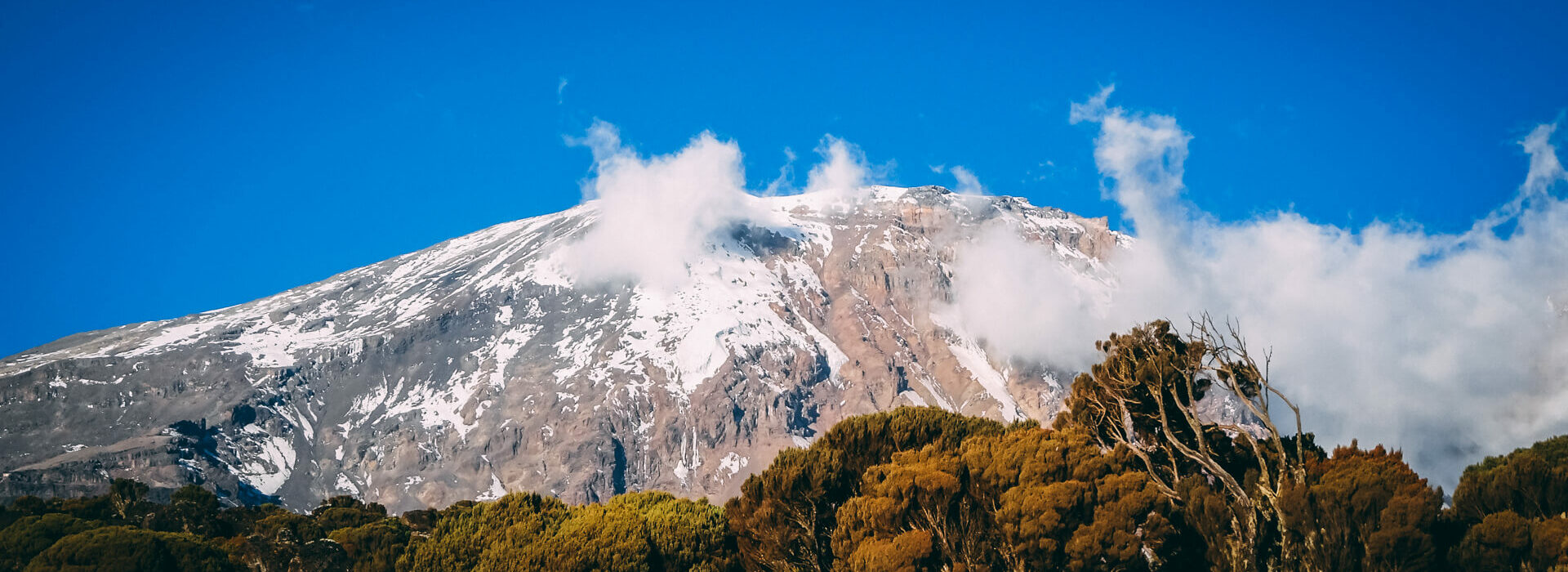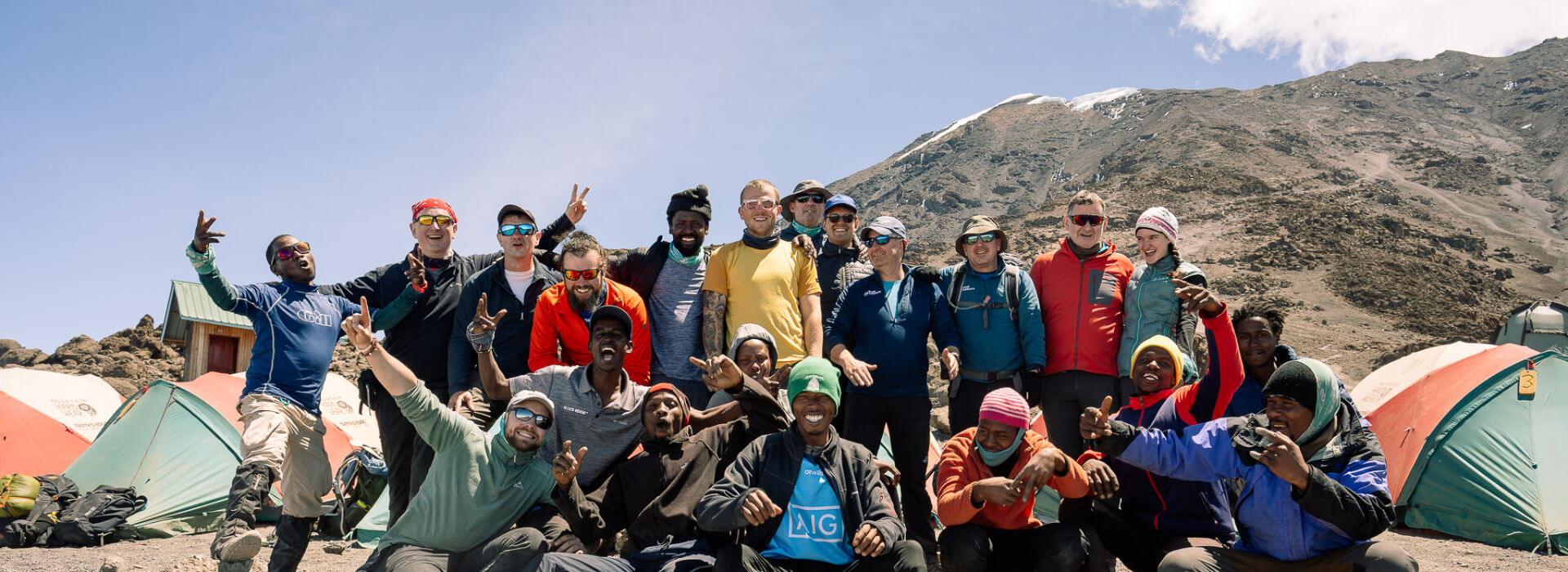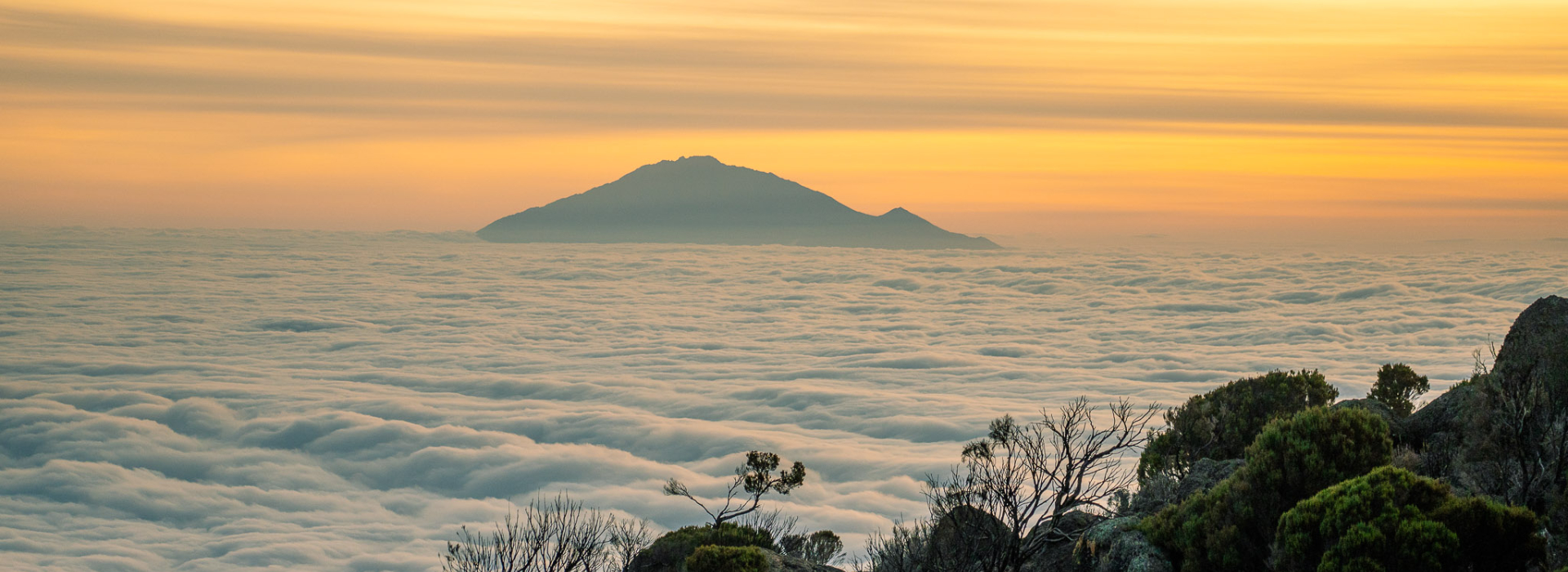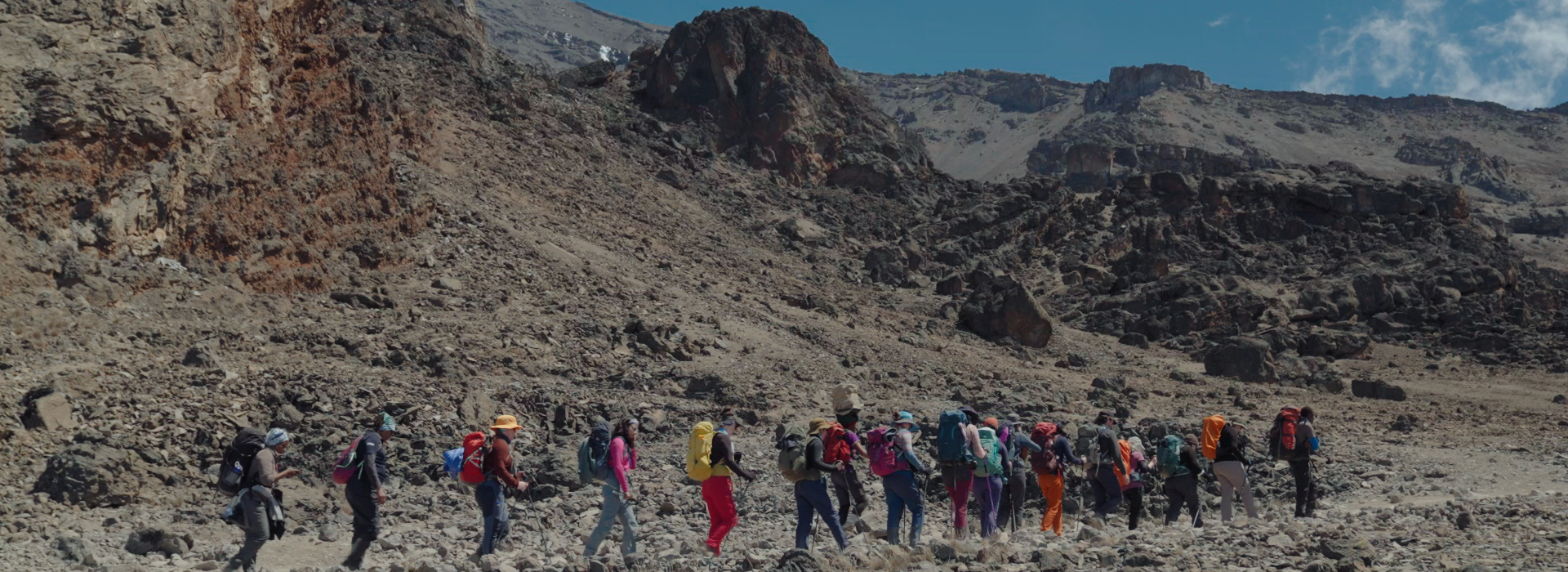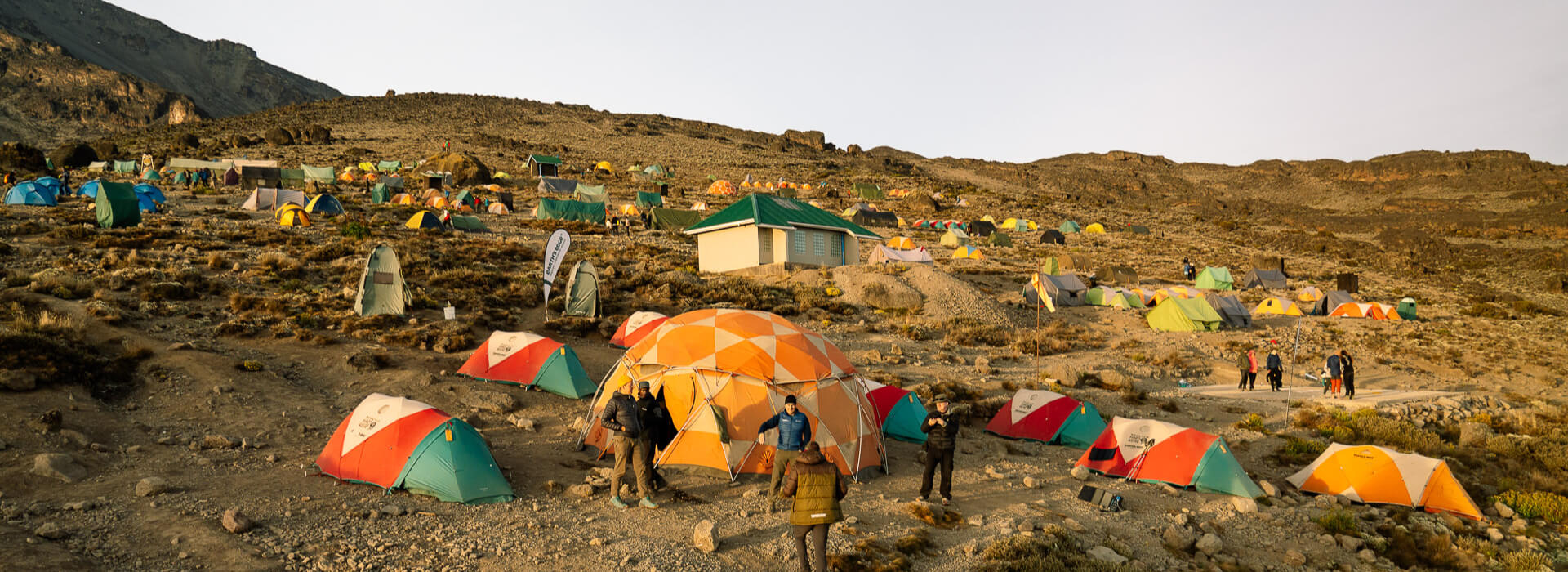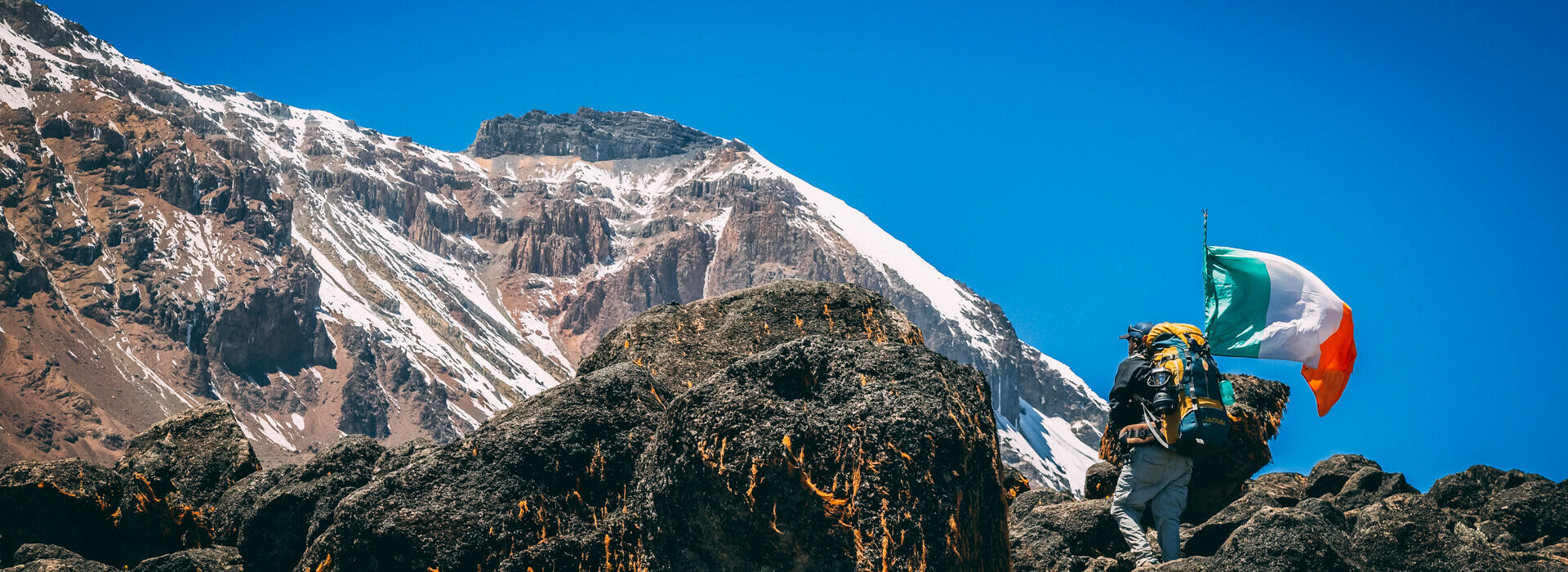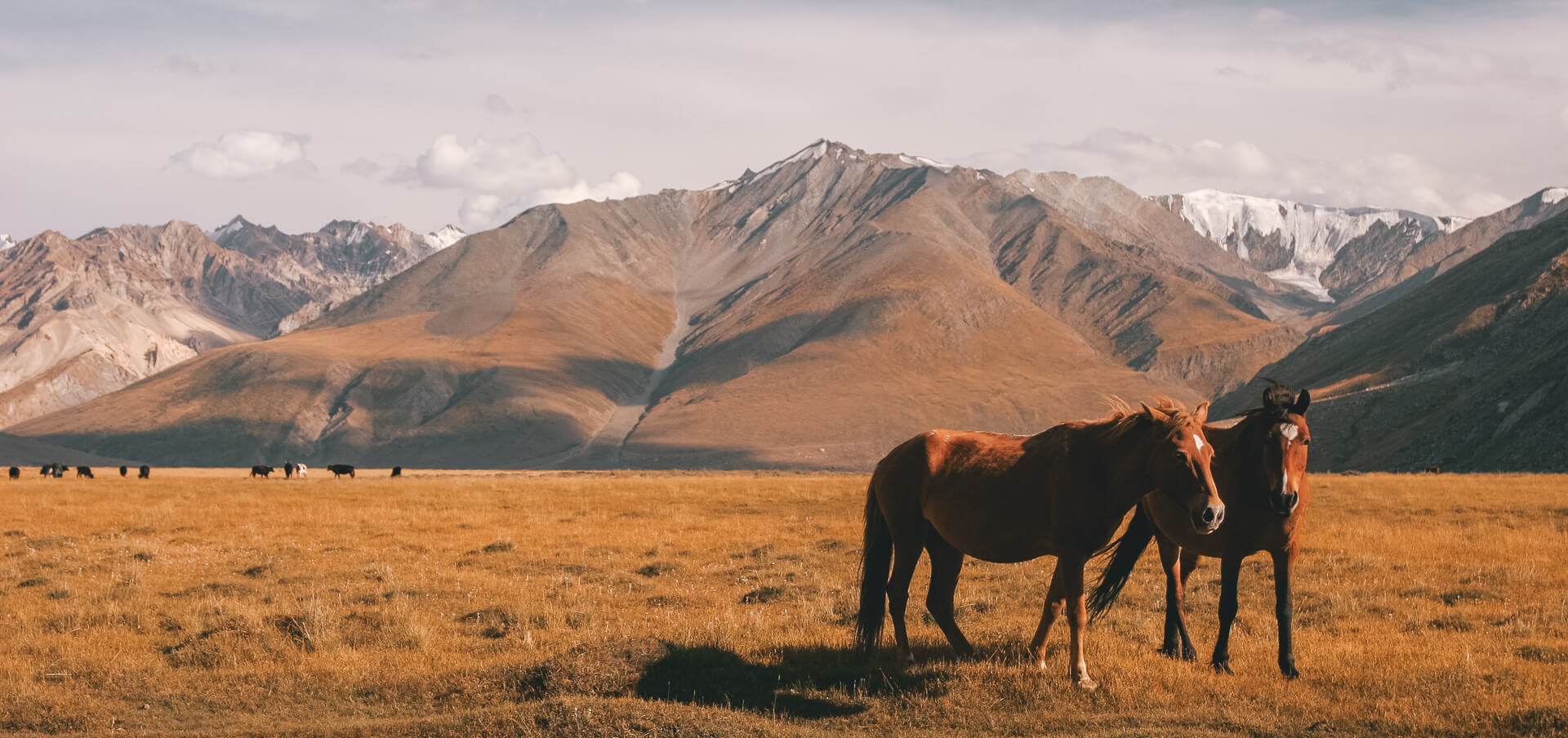Overview
We are the only company in the world who have an expedition leader and doctor on all Kilimanjaro expeditions while keeping group sizes sustainably small. Established in 2007, we offer high altitude trekking and mountaineering in some of the most breath-taking locations around the world.
Climbing Kilimanjaro
Kilimanjaro is not only Africa’s tallest mountain standing at 5,896m, but it is also the highest free-standing mountain in the world. Kilimanjaro is, in fact, a huge crater known as Kibo and it is over 2km wide.
Our 12-day itinerary includes seven days of trekking on the scenic Machame Trail. This time-frame allows for excellent acclimatisation and increases the chance of a successful summit. This route is also rich in biodiversity, and you will experience ever changing landscapes. From spotting African wildlife in the low scrublands, you trek through lush forests followed by striking alpine tundra before finally ascending over scree and past glaciers to the summit of Mount Kilimanjaro.
This trek is suitable for people with a good level of fitness. You do not need mountaineering experience to climb Kilimanjaro. Unlike most companies who spend their last night before summiting in Barafu camp, we stay in Kosovo camp. Kosovo camp is a much quieter camp, and is 120m higher in terms of altitude. This cuts an hour off our summit night!
The expedition leader and doctor work alongside our incredible team of Earth’s Edge guides and porters to deliver an exhilarating experience each and every day on the trail! The morning ritual of native song and dance gets the blood pumping in the early sunlight, and will help you reach the top!
There’s also a free day at the end of your trip where you can get some well deserved R&R by the pool, or go on an optional one-day Safari in Tarangire National Park.
Want to learn more? You can watch our Kilimanjaro vlog here!
Kilimanjaro Expedition Costs & What’s Included
The total cost of climbing Kilimanjaro is highlighted above. You are required to pay a €399 deposit to secure your spot. A part-payment of €1000 is due six months prior to departure. You can pay the remaining balance by instalments or in full. All fees must be paid three months prior to departure.
Your fees include the following:
- Return international flights from Dublin to Kilimanjaro (UK flights not included)
- Experienced expedition leader
- Experienced expedition doctor
- Training Weekend
- Earth’s Edge team of guides and a full support team
- All accommodation
- All meals (except in Arusha where accommodation is based on B&B)
- A celebratory dinner at the end of the expedition
- All transport throughout the expedition
- National Park fees & local VAT
- All group gear consisting of first aid kits, mountaineering equipment, cooking equipment etc.
- Use of state of the art tents and Thermarests
Flying from the UK?
You are more than welcome to join us from the UK. If so, you can select the ‘exclude flights’ option on the checkout. You can then book your own international flights to Kilimanjaro International Airport (JRO). We will arrange your airport transfers from the airport to our hotel in Arusha.
Read our Kilimanjaro blogs
Are you looking for even more information on this expedition? We have lots of extra insight into our Kilimanjaro trips here. You can also watch our Youtube playlist here.
Itinerary
Day 2
Arrive in Tanzania
↓
Arrive in Tanzania. Transfer to our hotel in Arusha and relax for the rest of the day.
Day 3
Machame Gate (1,490m) to Machame Camp (2,980m) 7 hrs trekking
↓
Drive to Machame gate and then trek through Montane forest to reach Machame Camp.
Day 5
Shira Camp to Barranco Camp (3,950m), 7 hrs trekking
↓
Trek to Barranco camp via Lava Tower (4630m). Today's route has stunning views throughout.
Day 6
Barranco Camp to Karanga Camp (4,000m), 5 hrs trekking
↓
Trek through an alpine desert to set up camp in the Karanga Valley.
Day 7
Karanga Camp to Kosovo Camp (4,800m), 5 hrs trekking
↓
Trek to Kosovo camp and prepare for tomorrow's summit attempt.
Day 8
Kosovo Camp to Uhuru Peak (5,896m) to Millennium Camp (3,832m), 14 hrs trekking
↓
Trek to the roof of Africa! Afterward, descend to Millennium Camp.
Day 9
Millennium Camp to Arusha, 6 hrs trekking
↓
Trek to Mweka Gate and then drive to Arusha. Enjoy the pool and bar at the hotel in the afternoon and evening!
Day 10
Day of leisure
↓
Relax by the pool or go on our optional safari day if you still have some energy left!
Facts
Kilimanjaro lies within the 756-square-kilometre Kilimanjaro National Park, a UNESCO World Heritage Site, and is one of the few places on earth that supports five major ecological zones: rain forest, heath, moorland, alpine desert and glaciers.
There are actually three volcanoes that form Kilimanjaro; Shira, Mawenzi and Kibo. You will pass Shira enroute to the summit, but it is Uhuru Peak on the volcano of Kibo that marks the summit of Mount Kilimanjaro and the highest point in Africa. Its last eruption was around 200 years ago and today Kibo lies dormant.
In 1889, German geographer Hans Meyer and Austrian mountain climber Ludwig Purtscheller were the first to climb Kilimanjaro.
Approximately 25,000 people attempt to summit Mt. Kilimanjaro every year. About two-thirds of them are successful. Altitude-related problems are the most common reason climbers turn back.
The Kilimanjaro Porters Assistance Project is an American run Tanzanian NGO which campaigns for the fair treatment of porters on Kilimanjaro. KPAP send an investigator on all our Kilimanjaro treks to monitor porter welfare. KPAP investigators report on porter compensation, tips, clothing, food and the weight of their loads. Earth's Edge is a proud partner of KPAP.
Kilimanjaro is not a peak you can climb on your own. It is mandatory to climb with a licensed guide and have porters carry your equipment. This sustains the local economy and allows local people to reap the rewards of tourism.
Best time to climb Kilimanjaro
In Tanzania, there are two wet seasons and two dry seasons. The "long rains" run from March through May and the "short rains" run from November to mid-December. Outside these times is considered the dry season. It can still rain during the dry season but statistically, it is much drier. This makes January, February and June through to October the best time to climb the mountain.
What you need to climb Kilimanjaro
We have an extensive packing list on what you should bring with you when hiking Kilimanjaro. You can view this packing list here.
How to prepare to climb Kilimanjaro
We have classified Kilimanjaro as a level 5 expedition, for more information about our levels system click here. We expect participants to have a very good level of fitness. Although this is not a technical climb, it is very steep in places and you will be gaining height very quickly. The group moves at a comfortable pace and nobody is ever left behind. Nevertheless, it is your responsibility to contact us if you have any concerns regarding your level of fitness, health or ability to complete the trek. We strongly recommend that you read our information pack, which gives in detail on how you should prepare for climbing Kilimanjaro. You can read this document here.
 Certified B-Corp
Certified B-Corp
Earth's Edge is a certified B-Corp. In fact, we are the highest scoring B-Corp in Ireland. We are passionate about sustainable travel, bettering the lives of the people connected with the company and minimising our environmental impact.
 Tree Planting
Tree Planting
We plant 8 native trees in Nepal for each person that travels with us in partnership with Eden Reforestation Projects. If you would like to plant more, please contact info@earths-edge.com. Each extra tree costs €0.75 cents. Learn more about our tree planting here.
